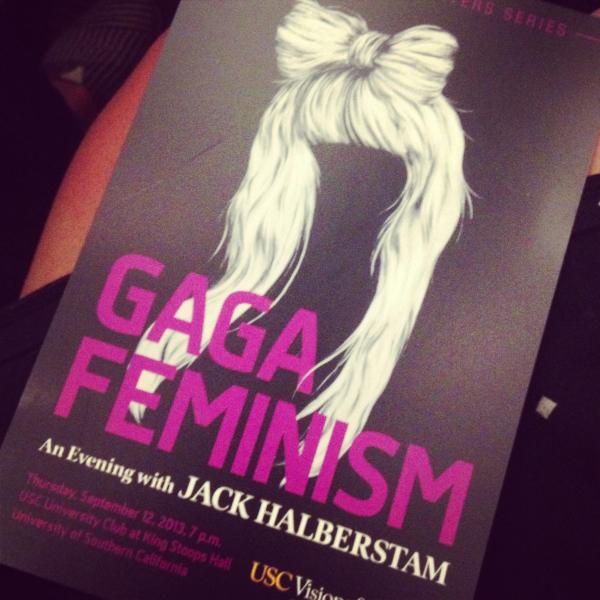Gaga Feminism: An Evening With Jack Halberstam

On Thursday night students and community members lined up outside the university club to hear Jack Halberstam explain what exactly is “Gaga Feminism.”
This was the first of four events in USC Provost’s Distinguished Writers Series, where a revered USC faculty member gives a reading, has an interview with another USC faculty member, and finally opens up the floor for a Q&A segment.
The focus of Halberstam’s lecture centered around ideas of gender fluidity.
The first image that Halberstam asked audiences to reflect on was that of Thomas Beattie, the transgendered man who carried the baby of his female partner when she was unable to conceive, known to most Americans as “the first pregnant man.”
He went on to explain that this image embodies forms of untraditional means of childbearing that make it so that birthing and rearing children is no longer exclusively the responsibility of women.
“The tyranny if the biological family has been broken,” said Halberstam. “Now we can see the end of the tunnel, the end of normal.”
Next, Halberstam asked readers to open their minds further, and contemplate the end of marriage.
“The norm now is officially divorce,” said Halberstam. “The norm predicts that marriages will end.”
He pointed out that as life expectancies are increasing, there is a dwindling number of lifelong partnerships. Even the new legality of same-sex marriage is not a terribly promising development for Halberstam.
“The goal of the 1960s gay movement was not to create gay marriage, but rather to loosen the confines of societal institutions such as marriage,” explained Halberstam.
He identified tax benefits and health benefits as the only two upsides of marriage, neither of which he viewed as valid reasons for entering into a lifelong partnership.
The next concept that Halberstam asked audience members to contemplate was queer families.
“And I do not mean simply replacing the hetero sexual couple with the lesbian couple,” said Halberstam. This term does not just apply to gay and lesbian parents, but to all of the non-nuclear family structures—including unmarried parents, divorced parents, and stepparents.

“Through measuring oneself to a made up norm, people govern and adjust themselves,” said Halberstam. “But now there are new gender norms that we must recognize and accept.”
In response to questions of “Why Lady Gaga?” Halberstam explained, “she represents an explanatory mayhem that I wanted to harvest to my cause.
But Halberstam went on to explain that although Gaga’s gender ambiguity and devil-may-care attitude are very important in his ideas of feminism, Halberstam’s ideas are not about Lady Gaga; she’s merely an identifiable icon who resonates with the younger generations.
“For all of you who think you’re not feminists, let me show you a charismatic figure to draw you in so I can sell you my pitch,” said Halberstam of the thought process that led him to naming his book, Gaga Feminism.
Contact Contributer Sara Newman here and follow her on Twitter.



